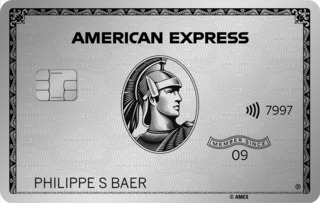From 2014, several Swiss banks, including the Hypothekarbank Lenzburg, Raiffeisen, and UBS, have offered their customers Visa’s V Pay debit cards. But the debit card was not able to displace the established Maestro card.
UBS stopped issuing new V Pay debit cards in the Autumn of 2020, followed by Raiffeisen in early 2022. Existing cardholders could continue to use their debit cards until their expiry dates.
V Pay debit card
The V Pay card from Visa was a debit card (these are sometimes still referred to as EC cards in Switzerland). The card competed with the Maestro card from Mastercard, the Debit Mastercard, and the Postfinance Card debit cards. Since 2020, V Pay has been phased out in favor of the Visa Debit card.
How do payments and cash withdrawals with V Pay cards work?
Like the Maestro card, PostFinance Card, and V Pay card, the V Pay card could be used for cashless payments at POS terminals in Switzerland, and to withdraw money at Swiss and foreign ATMs. For cash withdrawals in particular, debit cards are generally more favorable than credit cards. In Switzerland, debit cards are only offered in combination with a private bank account (checking account).
When you use a debit card to withdraw money, or to pay in stores (at Coop, Denner, or Migros, for example), the amount you withdraw or spend is deducted directly from your bank account. Some debit cards offered in Switzerland – namely the Debit Mastercard, Postfinance Card, and Visa Debit card – can also be used to make online payments.
What are the differences between V Pay and Maestro?
The Maestro and V Pay cards vary in terms of where they could be used. V Pay was primarily accepted in Europe, while Maestro could be used to pay and withdraw money in many parts of the world. Even in Switzerland, some merchants at which you could pay with other debit cards did not accept V Pay cards.
V Pay, for its part, was more secure than Maestro.
What are the differences between V Pay and the Postfinance Card?
V Pay debit cards could only be used for cash withdrawals in European countries. The Postcard from Postfinance let you withdraw money at many ATMs around the world. V Pay cards could be used to make card payments at POS terminals in many European countries. The Postfinance card could previously only be used to make cashless payments in Switzerland.
What are the advantages of V Pay debit cards?
The V Pay debit card was a smart card which used an EMV chip only, and did not have a magnetic stripe. This provided greater protection from skimming at ATMs, because EMV chips are far more difficult to manipulate than the magnetic stripes included on Maestro cards. There are no known skimming cases in which the cards in question used EMV technology only.
V Pay cards from Swiss Raiffeisen banks
Until the beginning of 2022, adult Raiffeisen customers could choose between V Pay and Maestro. Youth and student accounts only included the V Pay card.
Cash withdrawals at non-Raiffeisen ATMs cost two francs per withdrawal, with a standard Raiffeisen private account. The Plus account included 12 free out-of-network cash withdrawals per year, with the two-franc fee applying to additional withdrawals at Swiss ATMs not operated by Raiffeisen. Cash withdrawals outside of Switzerland cost 4.50 francs per withdrawal.
Comparing debit cards and private accounts individually using a comparison which accounts for all possible costs is worth the time.
V Pay cards from UBS Switzerland
UBS also issued V Pay cards between October 2014 and September 2020. UBS customers could opt for the V Pay card in place of the Maestro card. The fees applicable to UBS V Pay cards were identical to those of its Maestro debit cards.
More on this topic:
Overview of debit cards offered by Swiss banks
Payment methods compared
Compare Swiss private accounts and debit cards now
Compare Swiss banks packages now

 Deal of the Day
Deal of the Day 






